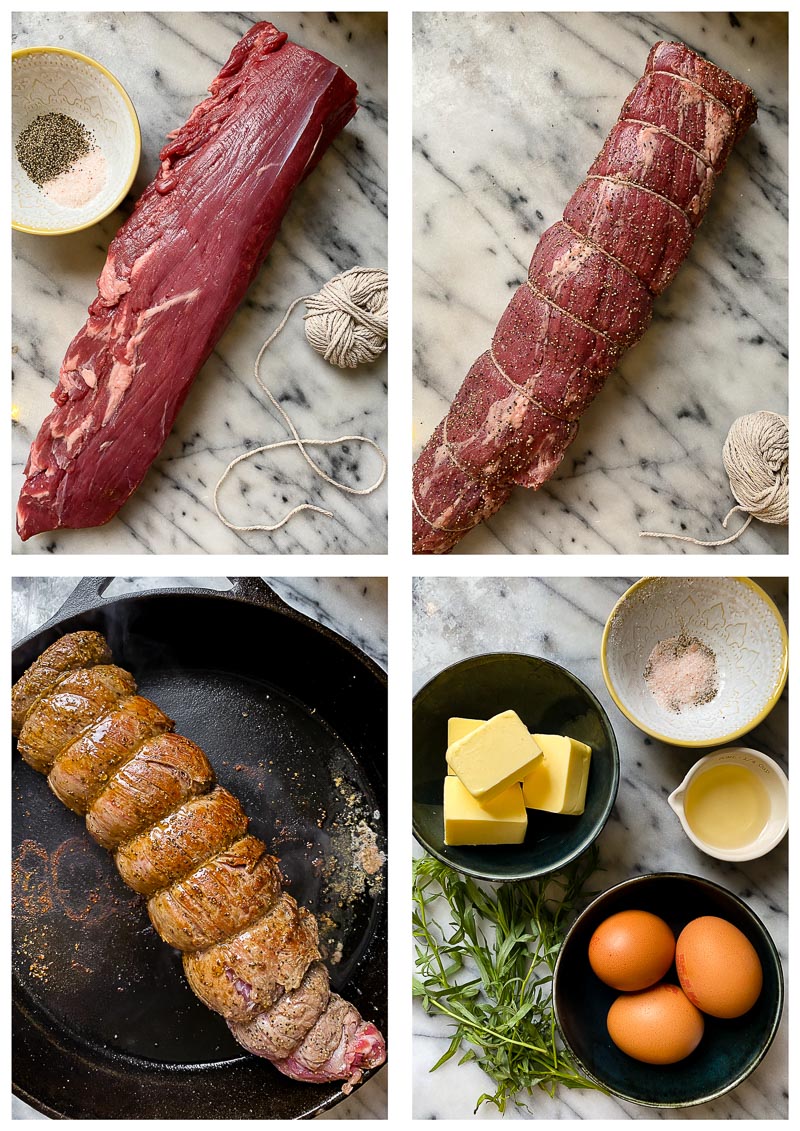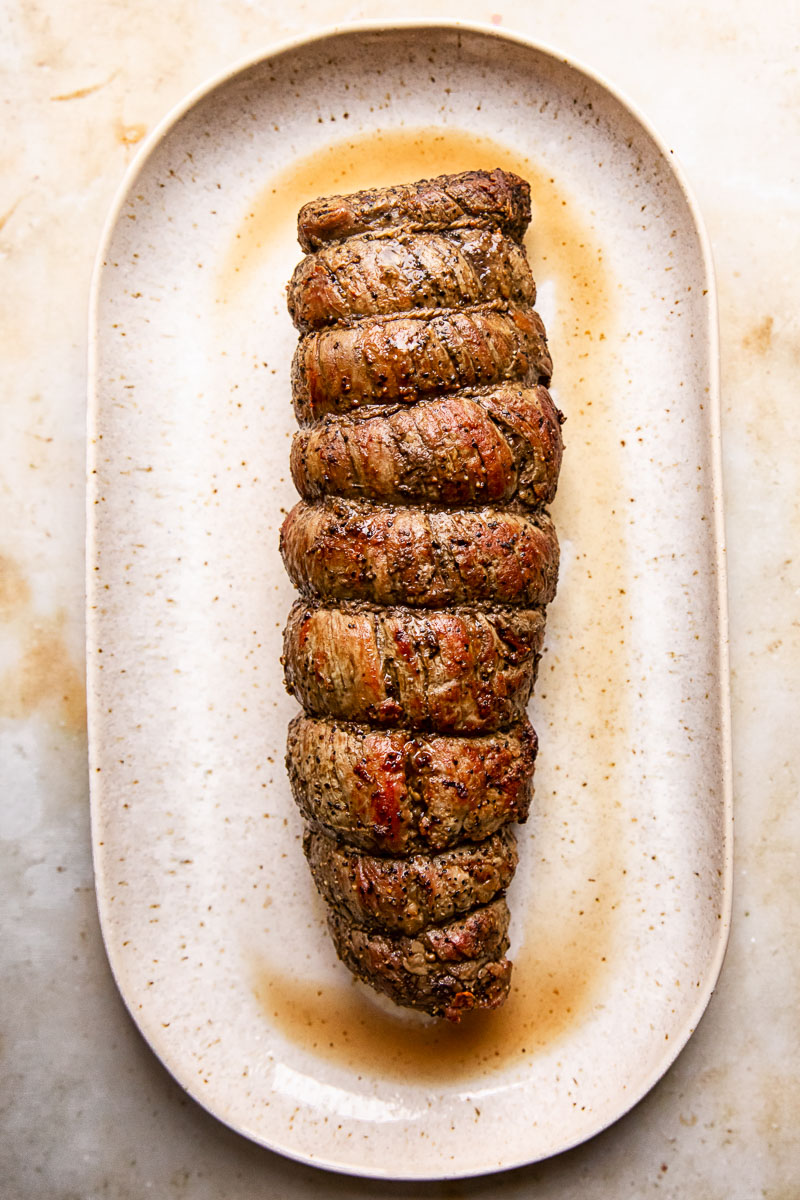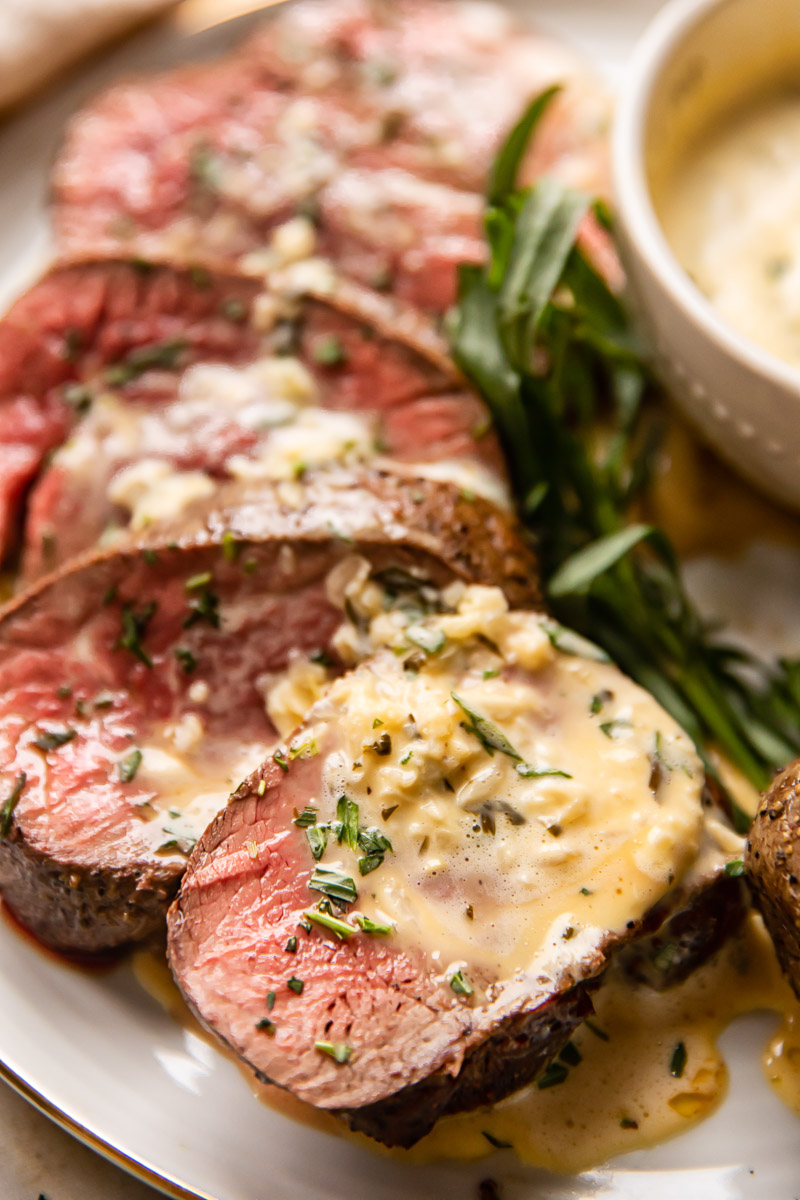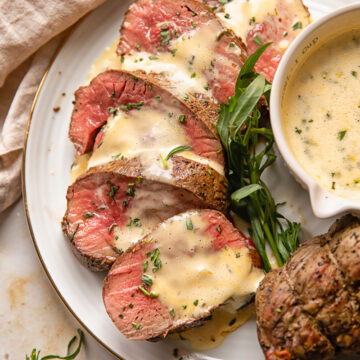This beef tenderloin goes so well with our Crispy Hasselback Potatoes.
Beef fillet goes by a few names in different countries. Beef Tenderloin the US or simply filet in France. Whatever the name, it is undoubtedly the most tender and flavourful piece of beef you can get your hands on! It also happens to be my favourite! Yes, I love a good Prime Rib Roast once in a while but I do find it a bit too fatty for my taste even if the fat does add flavour, as we all know! Tenderloin, on the other hand, needs no help in the flavour and texture department. It’s perfect as it is.
What is Beef Fillet?
Although this king of roasts goes by many names I prefer the American tenderloin because it is so descriptive. The name itself tells you what you are about to experience. Tender, juicy meat and so much flavour. This cut is a very tender steak, which comes from the lower middle of the back. It is so tender as it doesn’t get used very much by the animal. The entire beef fillet weighs anywhere between 4 and 6 lbs. It is usually cut into smaller steaks as it is precious and expensive. The famous Filet Mignon comes from the tip of the entire tenderloin and ‘Chateaubriand’ comes from the top of it. And we all know, they are often the priciest items on restaurant menus. It is also the same cut, that is used in Beef Wellington. Of course, you can always go the cheap route and make my Ground Beef Wellington! So how do we cook the tenderloin to best preserve the tenderness?
Recipe Tips and Notes
Don’t even attempt at cooking this cut of beef without a proper meat thermometer. It is key to the perfect fillet of beef. Whole fillet of beef is not the same thickness from one end to another; it tapers off. If you keep it whole, you run the risk of cooking thicker part perfectly and overcooking the skinnier end. For this reason, I recommend cutting it into two parts and cooking the thinner end 5 minutes less. I also recommend tying up your beef tenderloin in equal intervals with a kitchen string to keep it juicier. The seasoning I use is minimal. Just salt and pepper since this cut of beef has so much natural flavour already. Plus we will be serving it with uber delicious Bearnaise sauce. The most important part of cooking beef fillet is knowing your cooking times and internal temperature for Medium Rare-55C/130F, Medium-57C/135F and Well Done Beef-60C/140F-145F. You will have to be prepared to take meat out of the oven when you see the desired temperature EVEN IF it doesn’t feel like it’s been long enough. Trust me I have overcooked in the past and I cried! Also remember that the internal temperature will rise 2C-5F as it sits. I have cooked one piece at medium and another one at medium rare, and the latter one was by the far the most flavorful although it looks far too pink!
Easy Bearnaise Sauce
Traditional French sauces have a reputation of being fussy and difficult to make. Classic Bearnaise sauce definitely fits in that category. Because you already have so many things to cook and worry about for special occasion meals, I wanted to simplify the process. Here is my version of cheat’s Bearnaise sauce! It comes together in 5 minutes and is absolutely divine. You do need to have either a small blender (small being the key here) or an immersion blender, which is what I used. The process of making the sauce is very similar to homemade mayonnaise. The only difference is the distinct flavour of fresh tarragon, which is what Bearnaise sauce is known for. My main tip is to be careful with reheating the sauce. It will split if heated at high temperature. In the case it does happen, just stir it quickly with a wire whisk to restore the smooth texture. More Holiday Worthy Main Dishes:
Herbed Butter Turkey Crown (Breast) Mushroom and Lentil Wellington (Vegetarian) Spice Rubbed Pork Roast Baked Salmon with Rose Wine Cream Sauce Blackcurrant Compote Glazed Ham




